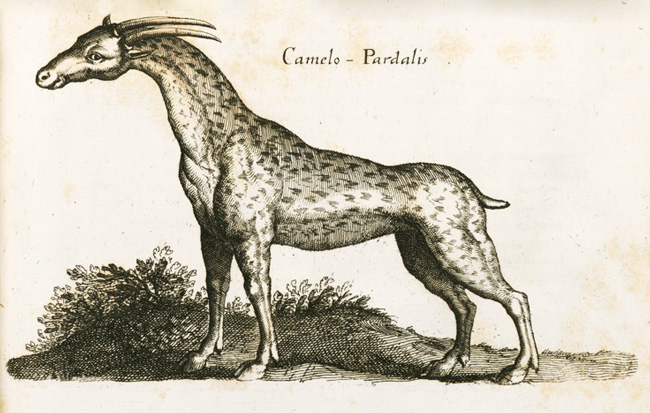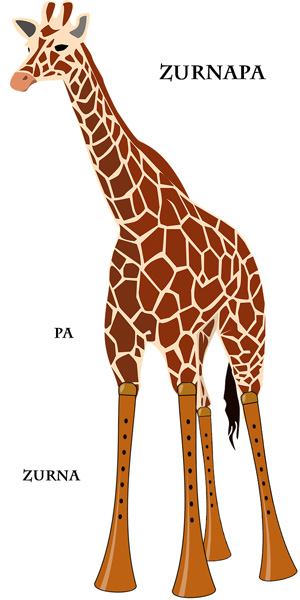Despite David Mitchell’s funny rant about the origin of the word camelopard, an archaic English word for giraffe, camelopard is not a product of a 17th century predecessor of whoever invented the word “phablet”.
Camelopard, sometimes spelled cameleopard, is the more traditional English expression for a giraffe. It comes from Greek kamēlopárdalis, derived from kámēlos “camel” and párdalis “leopard”, and was common until the late 19th century.
Not many people who used the word (or its widespread Latin equivalent) had ever seen a real giraffe, and, as a result, they often imagined a camelopard as looking literally like a combination of a camel and a leopard, as witnessed by the following illustration, drawn in 1655 by Polish scholar and physician John Jonston:

The word giraffe, on the other hand, was introduced into the English-speaking world only during the 16th century. It comes from French girafe, which in turn comes from Arabic zarāfa. The origin of the Arabic term is not certain, but it may come from Persian zurnāpā, a compound of zurnā (a type of flute) and pā “leg”.
Fortunately, people of the past knew neither the origin of the word “giraffe” nor what a zurna looked like; otherwise the image above could have looked like this:

 Tip: Are you a non-native English speaker? I have just finished creating a
Tip: Are you a non-native English speaker? I have just finished creating a  Web App
Web App
